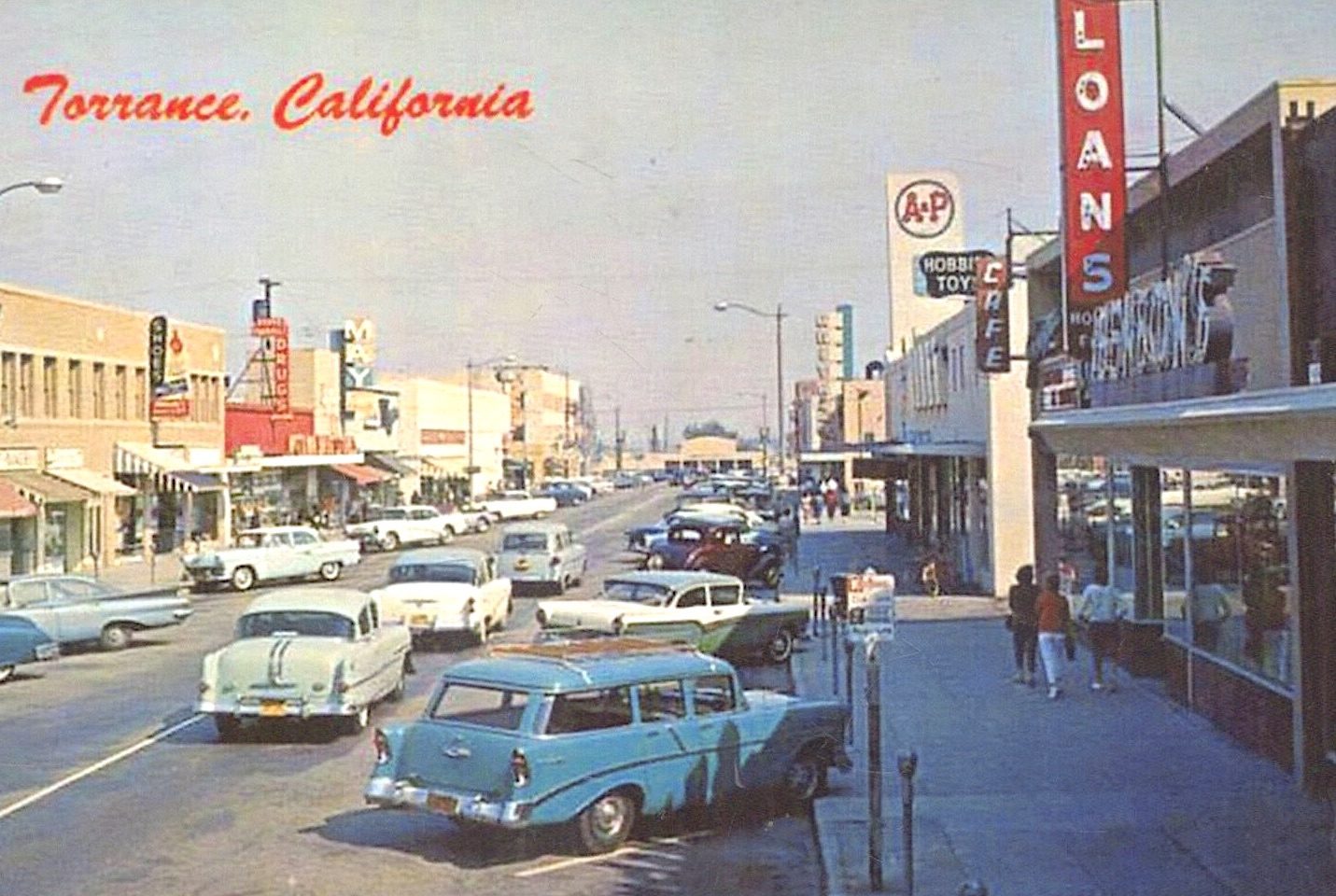
The South Bay’s three major beach cities, Redondo, Hermosa and Manhattan, all incorporated within 20 years of each other. Redondo came first in 1892, followed by Hermosa in 1907, and Manhattan in 1912.
Hermosa’s earliest beginnings as a city actually go back to 1900, when Los Angeles businessmen A.L. Burbank and Eugene Baker purchased 1500 acres of empty beachfront land from A.E. Pomeroy for $35 an acre. Pomeroy had acquired the land from the owners of the Sausal Redondo Spanish land grant, whose borders extended from Ballona Creek south to Hermosa, and eastward to include the Inglewood area.
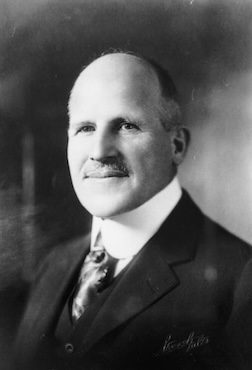
The Los Angeles-based Burbank & Baker firm acted on behalf of developers Moses Sherman and Eli Clark, whose wide-ranging business interests included coastal operations in Playa del Rey and Redondo Beach. After the land was acquired, Sherman and Clark formed the Hermosa Beach Land and Water Co. to develop the townsite.
The pair’s intentions were made clear by the first building they erected at the corner of Ocean Front (now The Strand) and Santa Fe (now Pier) avenues: a real estate office selling their lots.
The Los Angeles Herald newspaper became an early booster of the new settlement, running a laudatory article on Feb. 24, 1901, touting its potential both as a beachside resort and a place to live. “Hermosa will be simply a great playground for the people, large and small, with no objectionable features,” its anonymous author raved.
Its non-objectionable positive features included a sparkling beach with shallow water for wading, an underground freshwater aquifer to supply its under-construction homes with pure water and its year-round temperate weather.
The developers already were at work on adding features to the new development in 1901. They made plans to avoid the bane of seaside towns back then, the discharge of sewage into the sea. Instead, they set about building a self-contained sewage system that would not foul the ocean waters, eventually connecting it to the countywide sewer system.

They also put in orders for lumber to construct a 16-foot-wide, 1.5-mile-long wooden plank boardwalk modeled on the famous (and much larger) Atlantic City walkway. And, once an electrical power grid had been established, the boardwalk would be illuminated in the evenings.
One part of the vision for the city seems unlikely from a modern perspective, given Hermosa’s latter-day reputation for nightlife and revelry: the original city fathers called for the outlawing of alcohol and the taverns that served it within the city.
Here’s another early city ordinance whose strictures have been sorely tested in the now densely populated burg: originally, the distance between houses could be no less than ten feet.
Connections to the outside world also were underway. The Santa Fe Railway steam train line already had established a stop in the city on its route down the coast to Redondo Beach, though a permanent station wouldn’t be built until 1926. The Los Angeles-Pacific Railroad Co., precursor to the Pacific Electric Red Car, would bring trolley service to Hermosa in the summer of 1904.
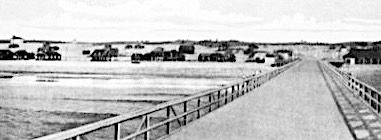

1904 also marked the construction of the city’s first pier. The 500-foot-long wooden structure couldn’t stand up to storms and high tides, however, and a 1913 storm swept much of it out to sea. It was replaced by a much-ballyhooed cement pier in 1914.
A similar fate befell the original wooden boardwalk. Waves and high tides repeatedly ate away at sections of it. A concrete section replaced part of it in 1914, and the full length of it became concrete in 1926.
But we’re getting ahead of the story of how the nascent town continued to take shape in the early 1900s. By 1904, Hermosa Ave. and Santa Fe Ave. (Pier) had been paved, the St. Cross Parish had been established, and the city’s first school, Ocean View, was under construction following the passage of the new Hermosa Beach School District’s first bond election that June.
An estimated 530 residents lived in the city in August 1906 when the movement toward incorporation began. On Nov. 19, Hermosa officially petitioned the Los Angeles County Board of Supervisors to set up an incorporation election.
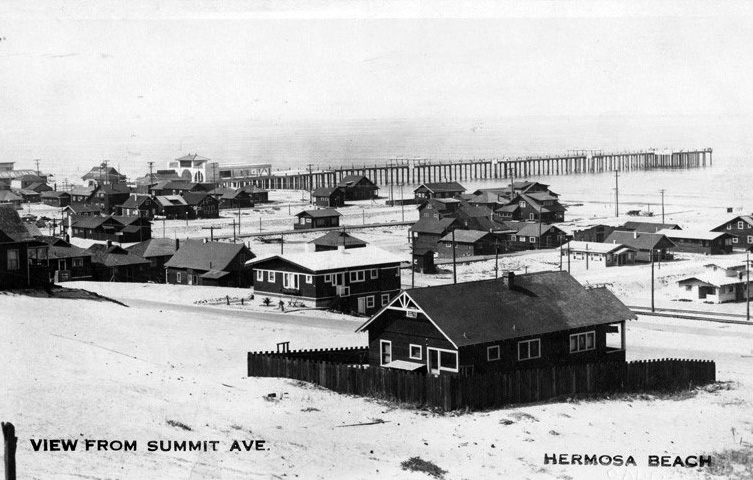
The Supes agreed, and set the voting date for Dec. 24, 1906. A total of 48 ballots were tallied by election officials after the polls closed. One of them was voided for unknown reasons, probably because it was lost or damaged. The final count: 24 votes for incorporation and 23 against!
Hermosa Beach declared itself an incorporated city when the official papers certifying its status as such arrived from Sacramento on Jan. 14, 1907. On Jan. 23, John Q. Tufts was chosen to be the city’s first mayor and the other four members of the Board of Trustees were named.
Also, as a result of the election, ownership of Hermosa’s two miles of beach reverted to the new municipality. It remains the only one of the beach cities to own its beach; the others are owned by Los Angeles County.
It didn’t even take a year for neighboring Redondo Beach to send out feelers about incorporating the new city just north of it. Hermosa quickly demurred, and also successfully beat back a 1908 attempt by Redondo to annex the eastern half of the new city. No further attempts have been launched.
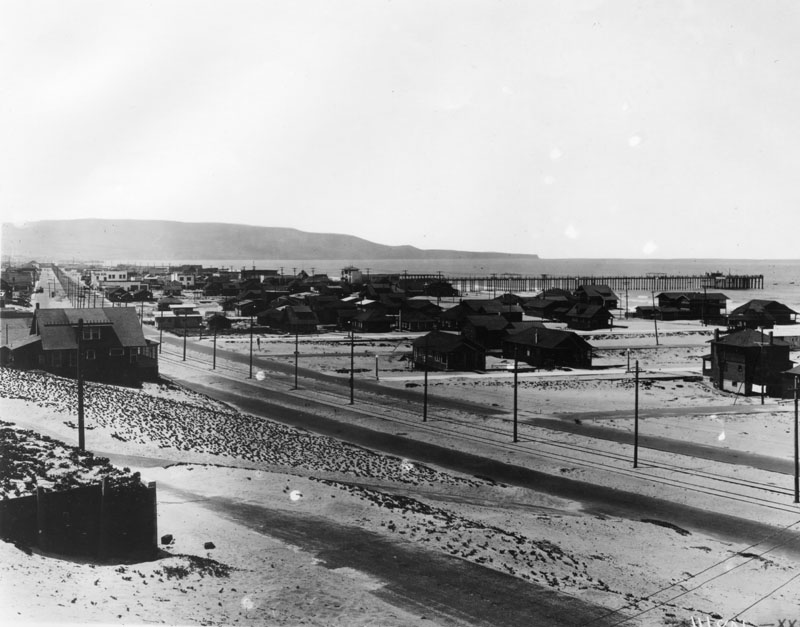
Sources:
Footnotes on the Sand: An Incomplete Compendium, an Arbitrary Selection of Events, Rumor, Speculation, Some Fact and Some Fiction About Hermosa Beach, by Patricia A. Gazin, self-published, 1991.
“History of Hermosa Beach,” Hermosa Beach Museum website.
Los Angeles Herald archives.
Los Angeles Times archives.
Wikipedia.

(Credit: Los Angeles Public Library Photo Collection)
